How to protect guerilla cannabis plants from wild animals
List of contents
Guerrilla cannabis growers are beset with challenges on all sides. If it's not the worry of somebody discovering their secret grow plot, then it's the danger of losing the crop to any of the various pests and pathogens that every cannabis grower must deal with, but often with the added complication of difficult access and infrequent visits to care for the plants. As well as this, guerilla cannabis plants are vulnerable to the actions of various wild animal pests which can ruin a crop very quickly, either by eating it, digging it up or trampling all over the plants. In this article, we will look at some techniques to keep your cannabis plants safe from these beasts.
In our previous blog articles, we've already dealt with the principal diseases and pests that attack cannabis plants, as well as outlining the basics of setting up a guerrilla cannabis grow. In this new post, we will help you to protect your precious plants from the various wild and domesticated animals that seem intent on undoing the grower's hard work. These animal pests are varied and can include (but are not restricted to) small mice and rats which will eat germinating seeds and chew the plants' stalks, moles and voles which tunnel around the roots and damage them, rabbits and hares which eat the tender leaves and stems, foxes, dogs and cats which will dig around the plants and use them as a toilet, wild boar which dig up, trample and eat plants, and finally, goats and deer, which, if hungry, can quickly devastate your crop.
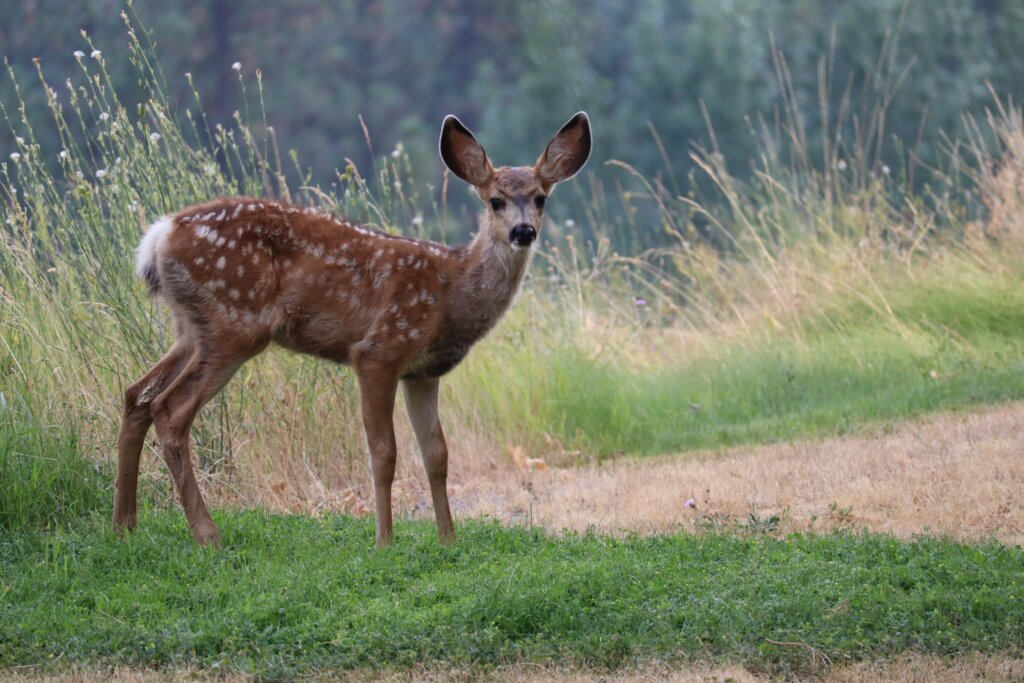
Physical barriers
The most effective and reliable way to protect your plants from wild animal problems is to completely deny them access to your plot. A good, sturdy fence of the correct height will keep out pretty much all problematic animals, with the exception of mice and rats, although the investment in terms of labour and cost might not be worth it if you don't plan to use the same guerilla plot every year (many growers change location every season to avoid detection). Additionally, a well-built, solid fence is quite out of place in the wilderness, and as a result, can end up attracting undesirable attention from curious or suspicious people, thus defeating the object of the guerilla garden.
Wire mesh: Chicken fencing is a great way to keep pests away from your plants but still allow light and air to pass freely. This material requires a small initial investment but is resistant and reusable year after year. The flexible nature of chicken fencing means that it is simple to adapt to every situation, can be moulded around plants and to suit uneven terrain. It can be fixed to solid wooden posts or quickly tied to the surrounding trees or saplings to form a barrier.
Remember that some animals such as rabbits can dig under a barrier as well as jump over it, so make sure that any wire mesh fence is dug around 15cm deep in the ground and with a height of 60-90cm above ground if rabbits are a particular problem. Deer and goats will require a much taller fence to keep them out, as high as 2-3m, depending on the native species in your area. Alternatively, you can use wire mesh to just protect the main stem of individual plants from being eaten, simply encircle it with mesh or hardware cloth to keep it safe from damage that would certainly kill the plant.
To protect against mole and vole damage to roots, wire mesh can be used to create barrier cages that are buried in the ground before planting the cannabis seedling or cutting within it. These cages form an impenetrable barrier that prevents the voles from eating the larger roots while allowing the free drainage of water and for the smaller roots to emerge and colonise the surrounding soil.
Natural barriers: If you feel that wire mesh is not worth the investment or that it would attract too much attention, then an excellent barrier can be built using the natural materials around your grow plot, such as branches, twigs and brushwood. These natural fences are quickly erected as long as sufficient vegetation is available and they will do a great job at keeping wild animals out as well as hiding your plants from the two-legged variety of pests at the same time! Wear thick clothes with sturdy gloves and use the thorniest, bushiest plants you can find to build your natural barrier. Ideally, drive wooden stakes in at intervals to support the brushwood structure and then pile the fencing materials around them until you reach the desired height. Don't forget to leave a small entrance so you can access your plants!
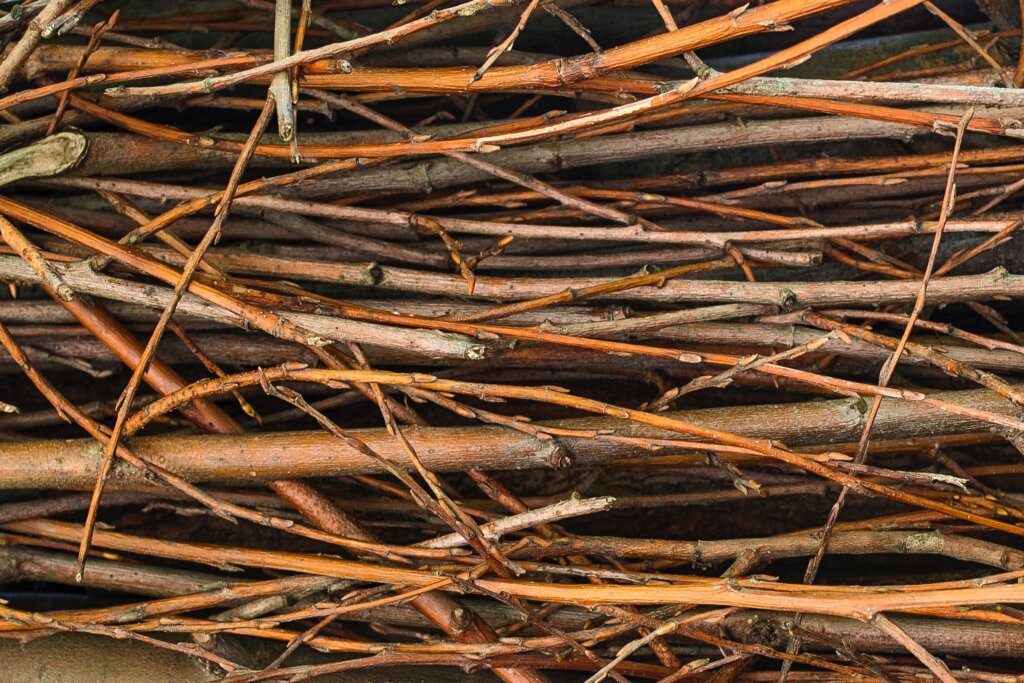
Electric fence: One or two strands of agricultural electric fencing, suspended at the correct height and powered by a small, inexpensive battery unit, can be hugely effective at keeping deer and goats away from your plants. A small amount of maintenance will be necessary to keep the surrounding vegetation from touching the electric fence, which can reduce its effectiveness. It's also worth investing in a spare battery that you can recharge at home and change every time you visit to ensure a constant power supply.
Animal repellents
There is a wide range of animal repellents that can either be bought or made at home and applied with varying degrees of effectiveness, usually depending on a strong and unpleasant smell to deter curious animals. These products have the advantage of being quick to apply and to take effect, although they usually require repeated applications for maximum effect, meaning that they aren't always suitable for a guerilla plot that you won't be visiting on a regular basis. Here are a few ideas:
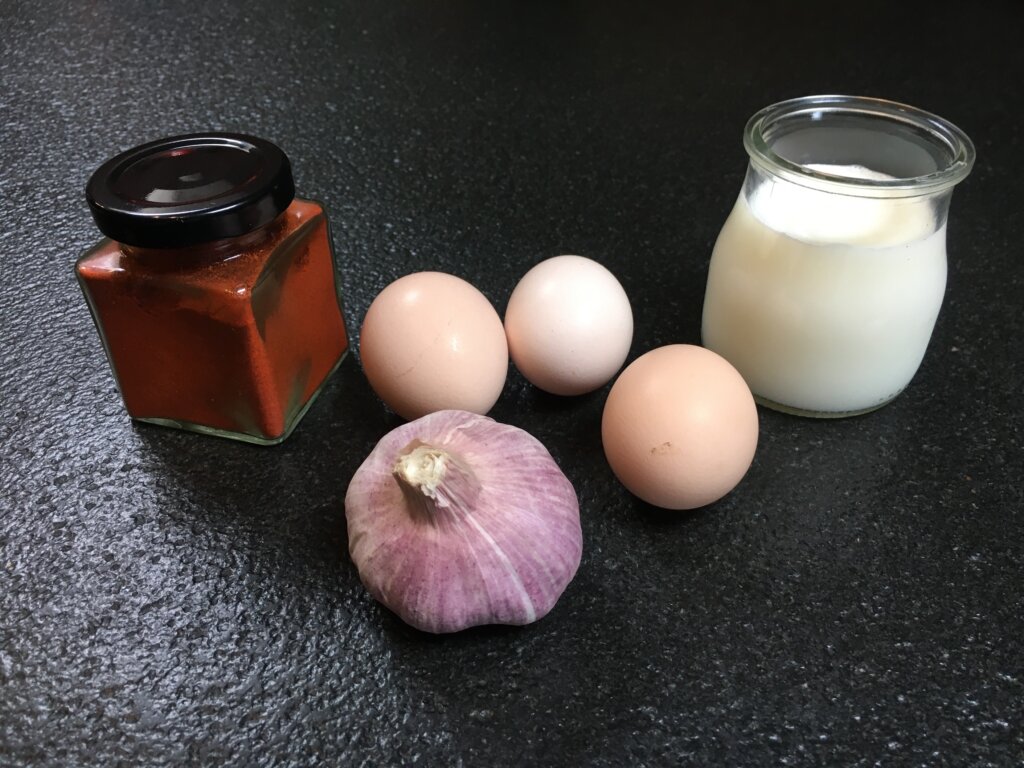
Hot pepper sauce: Get the spiciest chilli sauce you can find and blend it with water and a few drops of dish soap before filtering out the solids and filter and spraying on and around plants or on surrounding vegetation. The smell will deter most animals but any who are silly enough to take a bite will get a nasty surprise which is sure to keep them away in the future!
Garlic spray: Blend raw garlic cloves with plain water and a few drops of soap and then strain before spraying on the foliage. The organic phytosanitary brand Trabe offers Aliosan, a ready-made insecticide based on garlic.
Urine or manure: Human or predator urine will keep many troublesome animal pests at bay. Wolf urine is often sold commercially as a wild boar deterrent, lion manure is used to repel cats and bobcat urine works to scare rodents away voles from the garden. Peeing around your grow plot will definitely help, but the smell of a natural predator will scare away most wild animals and domestic pets although it will need reapplying after rain. Remember to stay safe when collecting predator urine and definitely don't break into your local zoo to get it!
Milk: Mix one part of milk with three parts of water and then spray on and around plants to deter deer from browsing. The milk resists rainfall fairly well but it's a good idea to spray every week during the height of the growing season to protect the new tender shoots. Some gardeners go a bit further with their DIY deer repellent and add crushed garlic, a few eggs and some cayenne pepper to the mix, making for a really stinky mix with an extra kick that will keep curious deer well clear.
Castor Oil: The bitter and unpleasant flavour of castor oil is famous and will repel burrowing animals such as moles and voles. Use 2 parts oil to 1 part soap then dilute 10ml of this mix per litre of water and spray onto the soil directly, soaking it well.
Hair: The natural aromas we emit are usually enough to frighten most wild animals away, so we can use human hair to keep our plants safer. Stuff old socks with a handful of hair (try asking at the barbershop for hair clippings) and tie them to trees or shrubs around your guerrilla grow plot, forming a scented ring of protection that only the bravest wild animals will dare to enter. Dog hair will also work to keep deer and rabbits away in the same way.
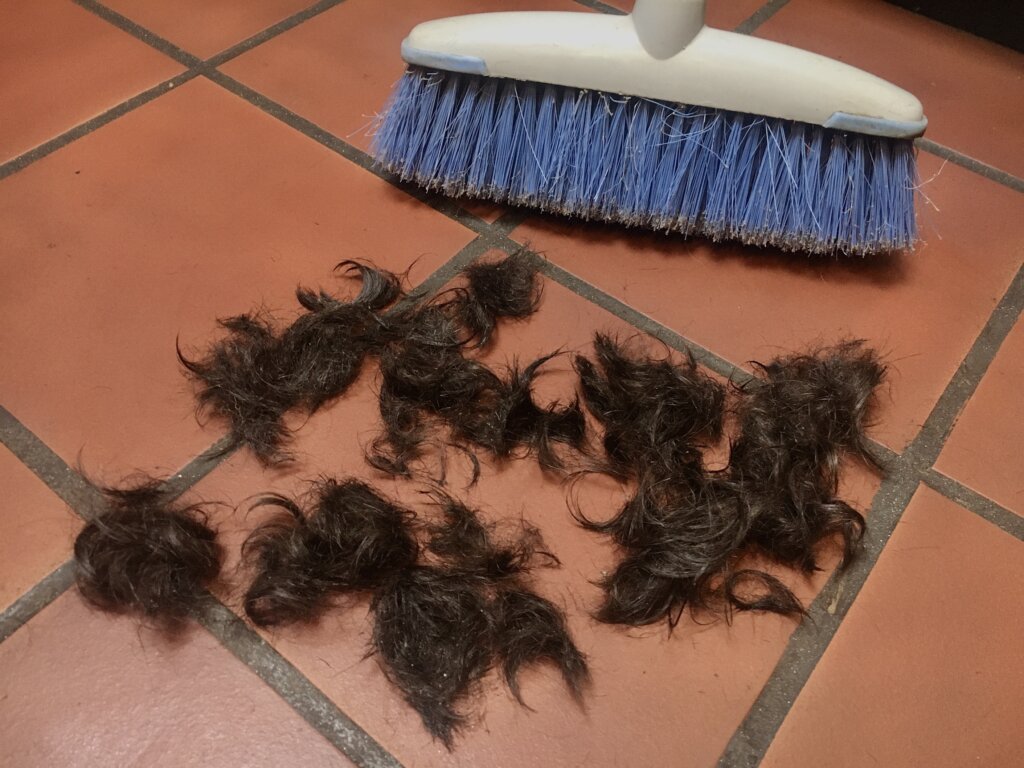
Soap: Some growers swear that bars of scented soap will keep deers away from plants. They hang them in old socks or cheesecloth bags at strategic points among the vegetation and also skewer them on sticks placed around the garden.
Diesel or Creosote: Rags soaked in either of these two strong-smelling liquids and then hung around the grow area will help to repel deer, with growers reporting greater success when using diesel than with creosote.
Physical deterrents
There are various products on the market designed to scare or deter wild animals from your garden. While these items may require you to make a small initial investment, in most cases the deterrent action will be highly effective and the products can be reused in subsequent seasons, making the cost worthwhile.
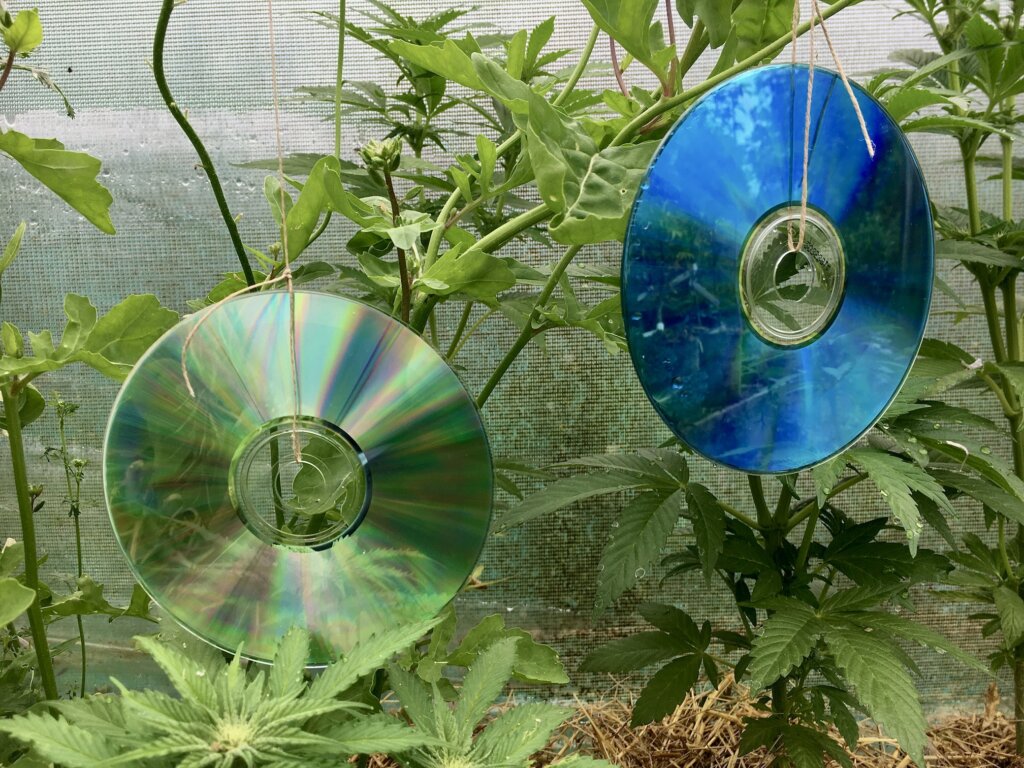
Repellent tape: this is a bright reflective mylar tape that gardeners tie on and around the plants to keep birds away. It can also have a limited scaring effect on deer and wild boar although they will soon become used to them and lose their fear. Alternatively, you can use old compact discs hung from trees that will spin in the breeze, reflecting light and frightening birds and animals. Please be sure to respect nature and remove all plastic from your grow plot once you've harvested your plants, don't litter the countryside!
Fake predators: Working in a similar way to a scarecrow (which can also work well in this situation), a lifesize statue of an owl will scare birds and small mammals away from your grow plot although in most cases, it probably won't take them too long to realise that it's not a threat. Rubber snakes or decoy birds of prey will also work in the same way. Movement is key to success with this method, so mounting fake predators on a spring or hanging them from a tree with rope will add motion and increase the scare factor exponentially.
Ultrasonic deterrents: These are widely available and very popular, often sold in garden centres to repel moles, voles, cats, dogs rabbits and even wild boars by emitting high-frequency sounds that are inaudible to the human ear but that supposedly cause discomfort to animals. Unfortunately, the effectiveness of this type of unit is questionable and, in the majority of cases, they do not live up to the promises made by the manufacturers.
Motion-sensor lights: A bright light powered by a car battery and connected to a motion sensor can be a great way to scare away animals such as rabbits, deer and wild boar. These devices can be very effective during the vegetative growth phase of cannabis plants although they should not be used near flowering plants because the bright light will interrupt the dark period essential for flower production, as well as potentially draw unwanted attention to your guerilla growing plot.
Noisy scare devices: The same applies to noise devices, which can be set on a timer or with a motion sensor to automatically make a loud sound that scares off wild animals as they are detected. These machines are highly effective at frightening animal pests but also just as good at attracting curious humans, something we should avoid at all costs!
Plants to deter animals
In addition to using strong-smelling preparations to scare away wild animals, we can also make use of certain special aromatic plants with odours and flavours that are unpleasant to these pests and that will help to keep them away from our growing spot.
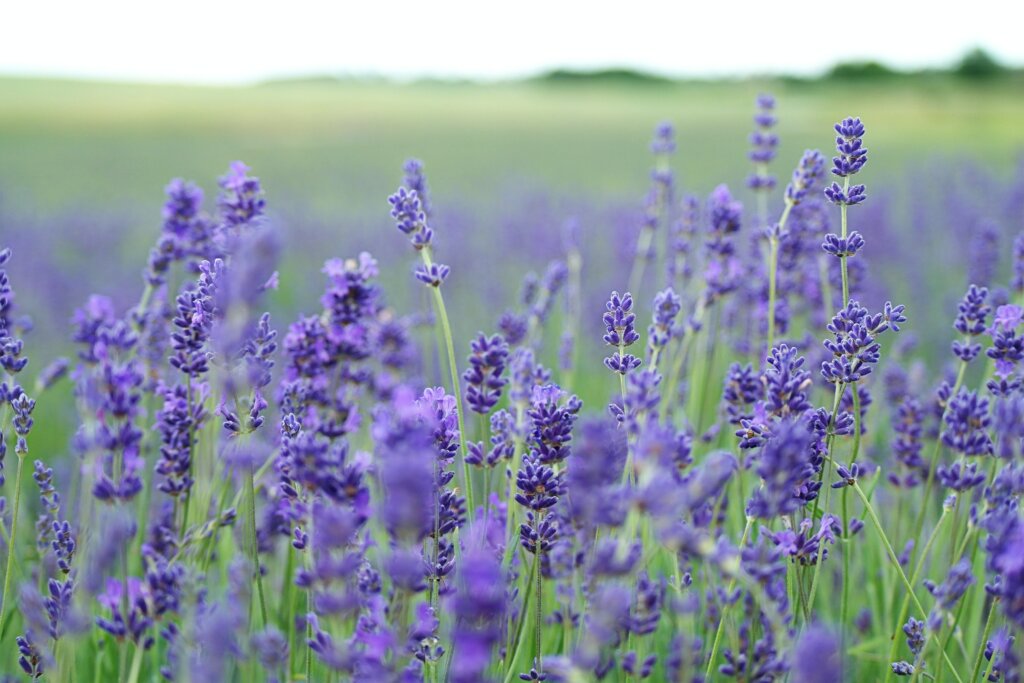
Using plants to repel animals will require a bit of forethought and pre-planning because ideally, we want the deterrent plants to already be established when we start growing cannabis there. For this reason, we recommend scouting out potential grow sites well in advance and, once the plot has been chosen, start planting a few of these deterrent herbs as early as possible in the season. On the positive side, once established these plants will carry on protecting the site with minimal work from the grower, unlike spraying products which need to be reapplied periodically. Here we list a few of the most effective plants for repelling wild animals:
Plants that can deter deer: Russian Sage (Perovskia atriplicifolia); Yarrow (Achillea millefoleum); Lavender (Lavandula angustifolia); Rosemary (Rosmarinus officinalis); Lamb's Ear (Stachys byzantina); Onion (Allium cepa); Bee Balm (Monarda). Deer particularly dislike plants with coarse, hairy leaves. Lavender also serves to deter goats.
Plants that can deter rabbits: Garlic (Allium sativum); Geraniums (Geranium dissectum); Common Sage (Salvia officinalis); Bigleaf Periwinkle (Vinca major); Ornamental Onions (Allium giganteum); Daffodils (Narcissus spp.); Wolfsbane (Aconitum napellus).
Plants that can deter wild boar: Hervil/Bitter Vetch (Vicia Ervilia); Basil (Ocimum basilicum); Mint (Mentha spp.); Rosemary (Rosmarinus officinalis); Lavender (Lavandula angustifolia).
Plants that can deter moles and voles: Garlic (Allium sativum); Onion (Allium cepa); Ornamental Onions (Allium giganteum); Daffodils (Narcissus spp.); Caper Spurge (Euphorbia lathyris).
Plants that can deter mice and rats: Mint (Mentha spp.); Grape Hyacinth (Muscari asparagaceae); Lavender (Lavandula angustifolia); Rosemary (Rosmarinus officinalis).
Things to avoid
Foxes, badgers, dogs and cats all love the strong smell of animal-based fertiliser products such as bone meal, blood meal and fish meal so avoid topdressing with these products or using a soil mix containing them unless they are well composted and broken down to make their smell less pungent. Otherwise, you run the risk of having your newly-planted garden uprooted and the soil scattered around as the animals dig to search for the source of this irresistible smell.
Avoid clearing all the vegetation around your plants. If your guerrilla plot is bereft of any vegetation other than your cannabis plants, not only will it look quite obvious to any passers-by, but any browsing animal that wanders through will have little else other than your precious plants to chew on. Try and leave as much leafy vegetation around your grow plot as you realistically can to provide alternative food options for wild animals to browse on.
One last thing, it might seem obvious, but don't plant anything that will attract wild animals to feed, such as sweet-smelling fruits like strawberries, etc. The mouthwatering aromas of sweet, sugary fruits will be irresistible to some of these animals!
Remember, you'll always get better results if you use a combination of several different repellent techniques to keep troublesome animals away from your plants, rather than just relying on one deterrent method. We hope you've found this information useful, if you have any ideas or suggestions of your own then please feel free to tell us in the comment section below.
Happy growing!




































































